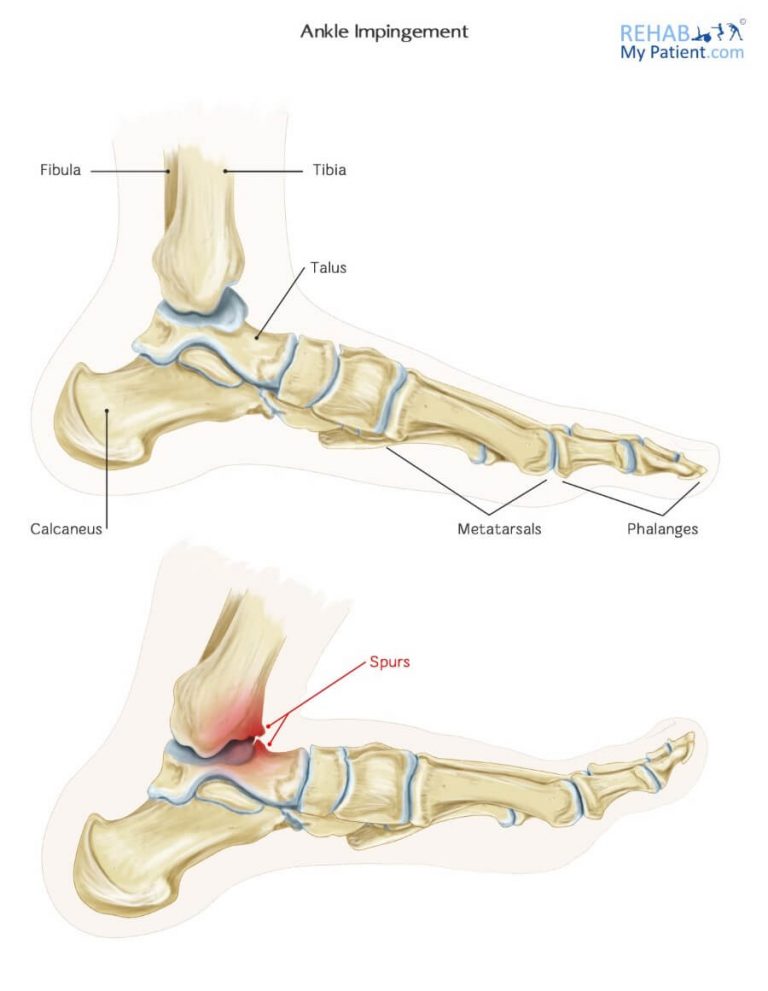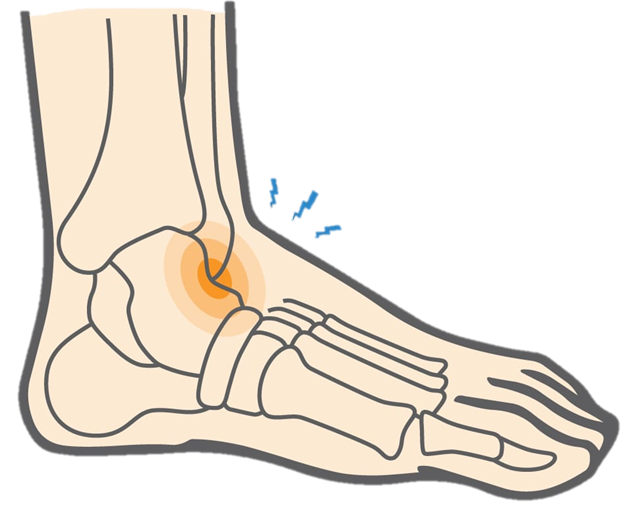Ankle impingement syndrome is an umbrella term to describe soft tissue getting pinched, caught or impinged upon by bone. The bone compressing on the soft tissue causes pain, reduced mobility, and range of motion.
Causes
There are several causes of anterior ankle impingement. A common cause is chronic, repetitive strain on the ankle due to playing sports or excessive training.
Activities that require repetitive bending of the foot upward (dorsiflexion) can lead to this condition.
Chronic tightness in the calf and Achilles.
Another cause of anterior ankle impingement is a trauma to the ankle, such as a recurrent ankle sprain that results in ankle instability.
Anterior ankle impingement is most common in;
• Football• Running• Ballet• Netball
Anatomy
“Impingement” describes an increase in pressure at the front of the ankle joint while walking. This increased pressure, may be caused by calf tightness.
The end of the shin bone and talus form the primary weight-bearing surface of the ankle joint. While walking, as the body progresses over the foot, the increased tension on the Achilles tendon prevents the tibial plafond from gliding over the talus.
Instead, the front of the tibial plafond impinges on the joint surface of the talus. This impingement not only causes pain but, may begin to cause the breakdown of joint cartilage between the two surfaces (arthritis). Left unchecked, the irritation to the joint often results in the formation of bone spurs.

Treatment
In some, patients physical therapy may be helpful to overcome changes in walking habits that may have developed and contribute to this condition.
Calf Stretching: regular stretching of the calf can be very beneficial. This is done in an effort to decrease the tension on the Achilles and to increase ankle motion.
Slightly Elevated Heel: means that the foot does not need to come up as far in the course of normal walking. Therefore, less impingement occurs.
Activity Modification: If appropriate, avoiding or limiting activities that cause ankle jamming will tend to cause the symptoms to improve.
(NSAIDs): The use of anti-inflammatory medication can be helpful if persistent symptoms are present.
Corticosteroid Injection: into the ankle joint may be helpful, particularly if there is some underlying ankle arthritis present.
Contact Me
Let's chat!
Need more information? Send me an email or drop me a line. I don’t bite!
- Charlotte@rehabontheroad.co.uk
- 07971448719

